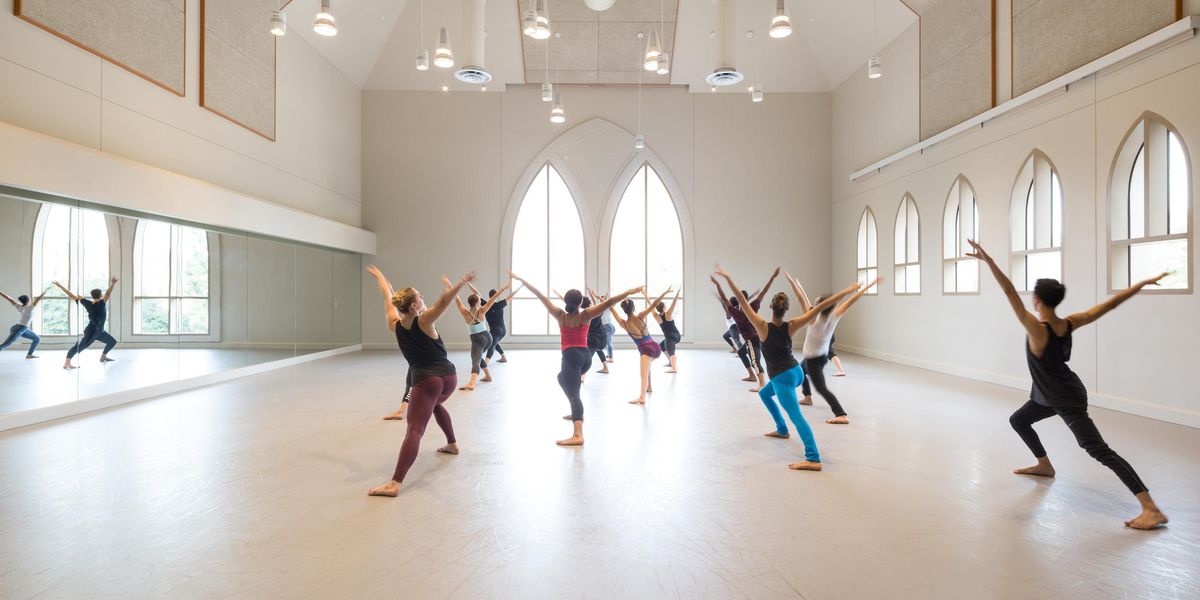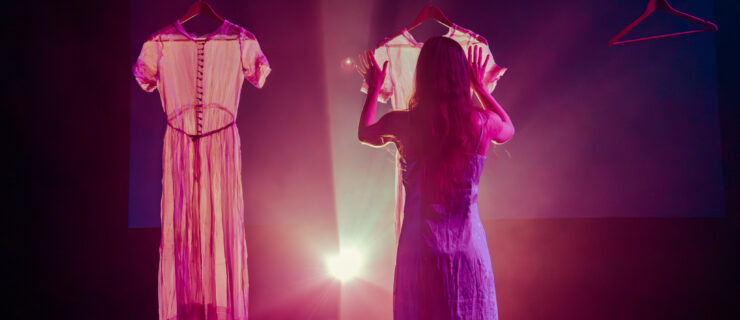On Broadway: Gigi's New Moves
The ensemble of Gigi on Broadway. Photo by Joan Marcus, Courtesy Boneau/Bryan-Brown.
Gigi has never been famous for choreography. Baldly put, it’s the story of how a couple of old bats groom the guileless young heroine for a career as a courtesan in turn-of-the-century Paris, and it first appeared in Colette’s 1944 novella. It became a French movie and a stage play—a newcomer named Audrey Hepburn starred in the Broadway version. But Gigi is best remembered for its Oscar-winning 1958 incarnation as a lush, luminous movie musical, dripping with Gallic charm and the irresistible songs of Alan Jay Lerner and Frederick Loewe. In 1973, they adapted their movie for Broadway, where it quickly closed. Among the failings critics pointed to were its skimpy, lackluster dances. And now that Gigi is back on Broadway, it’s fallen to Joshua Bergasse to provide the remedy, to inject dance energy into a show born without it.
Best known for the kind of freewheeling movement that would suit, say, sailors on the town in New York City or blonde bombshells in a musical about Marilyn Monroe, Bergasse agrees that at first glance he might not seem an obvious choice for the period preciousness of Gigi. Yet, he points out, “It’s a classic musical with great songs,” like others he’s worked on (West Side Story, Guys and Dolls and the current Broadway production of On the Town). And when the Emmy winner (for “Smash”) was first contacted about doing a Gigi revival, he recalls, “They said they really wanted to use dance as part of the storytelling and put in a lot of choreography. That was very exciting for me.”
It was also fraught with peril, on several fronts. For starters, Belle Époque France “is not necessarily something I knew that much about.” So he researched the waltz and other partnered dancing of the period. With encouragement from director Eric Schaeffer, he’s found places to add dance where before there had been only song. But he quickly realized that the turn-of-the-century setting would present difficulties beyond the unfamiliar dance vocabulary. “Our costume designer is extremely talented,” says Bergasse, “and the gowns are beautiful. But they are all floor-length, and many of them have trains. It was a challenge to figure out how we dance with them, how to make the gowns dance. And you have to get the gown to move across the floor so that other people aren’t stepping on it, so that your partner isn’t stepping on it. It took a lot of practice.”
And tweaking. After the costumes arrived, Bergasse recalls, “we had to adjust choreography, because there was less room onstage. There was a point where the men all passed through the women in two straight lines. But when we got the dresses on, we realized they couldn’t get through.”
The straight lines are something of an anomaly for Bergasse, who likes dance with a loose, impromptu look. But the world of Gigi is one in which formality reigns supreme. Bergasse, 42, understands this, but adds, “You want to see these people as real. You want to see them explode, so that the audience can relate to them. So there are places where we just really let loose, and places where we’re very contained, very specific, very proper. It’s the whole spectrum, which is fun. I think it’s fun for the dancers, too, because they’re doing a bunch of different styles.”
Given the period, he couldn’t resist including a can-can. “When you see these girls all spinning and these dresses flaring out, it’s beautiful, so colorful—this raunchy, fun, exciting moment.” By contrast, the number in which patrons at Maxim’s gossip about the main characters is “intricate” and “highly stylized,” he notes. And bits of ballet are strewn throughout the show. “We put in a couple of petit allégro sections, there’s a manège that happens, there are a lot of jumps for the men.” And, of course, there’s waltzing.
Doing “Smash” gave Bergasse an appreciation for the ways in which the camera can add “a new dimension” to his choreography. “But there’s so much excitement in going back to live theater—I love the challenges of creating the perfect moment onstage.” Whatever critics and audiences make of the new, retooled Gigi, they’re unlikely to complain that there’s not enough dance.
From Backstage
Dance ensemble:
12
Dance captain:
Alison Jantzie
Associate choreographer:
Alison Solomon
Specialties:
“I was looking for dancers with really strong ballet technique,” says Bergasse. “And there’s a can-can number, so we needed girls with high energy and big jump-splits and things like that.”
Pre-show warm-up:
Bergasse doesn’t impose one on his ensemble. “Everybody’s body is a little different, and everybody’s body needs different things to get ready for the show. So dancers really have to police themselves, and their warm-ups become very special and individual for them.”




